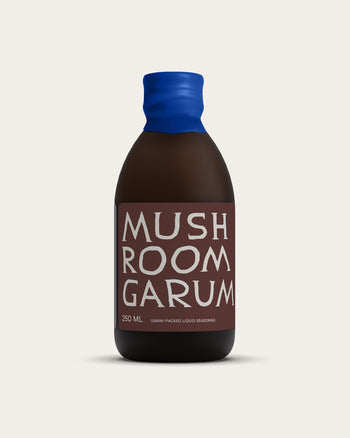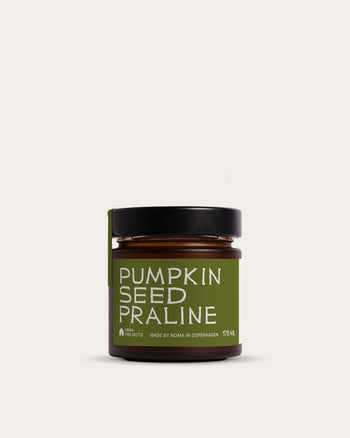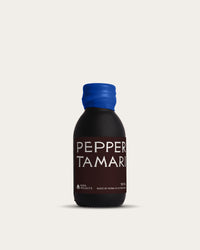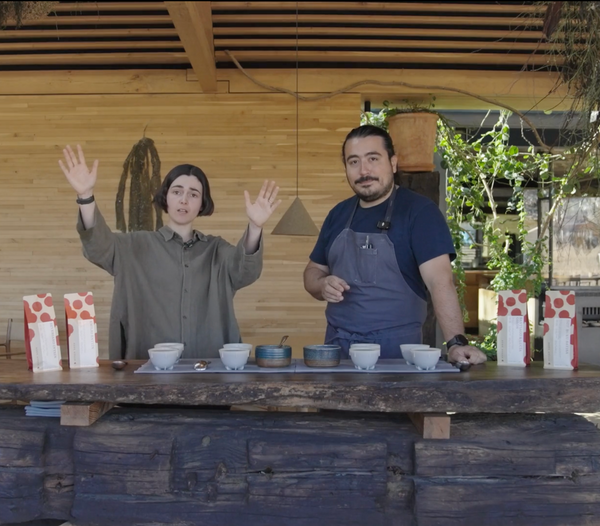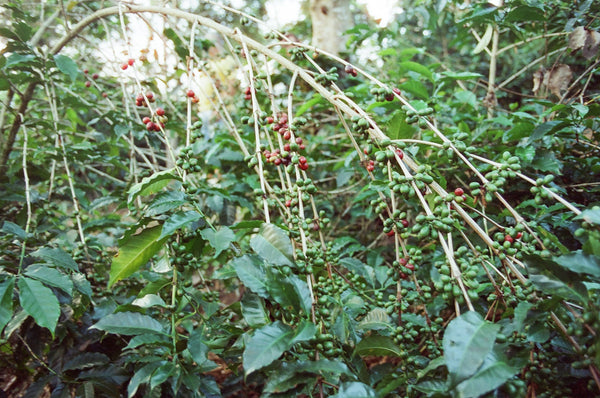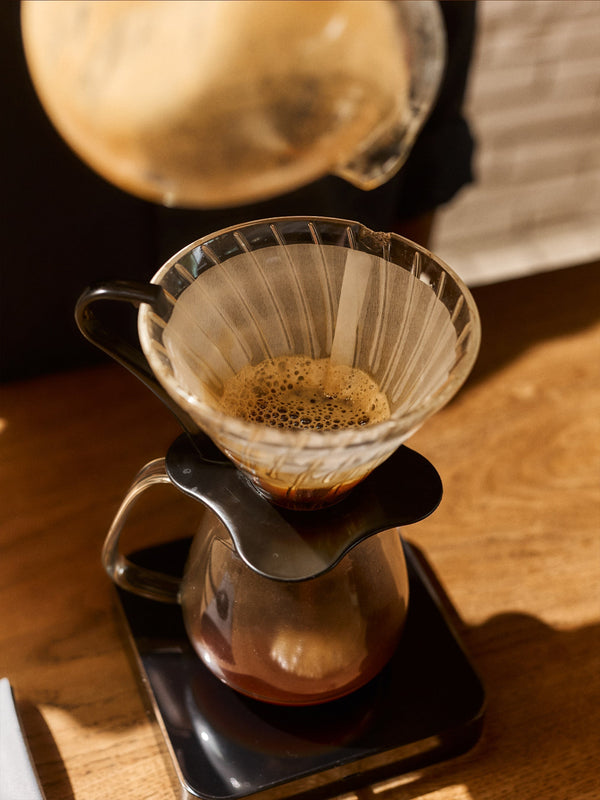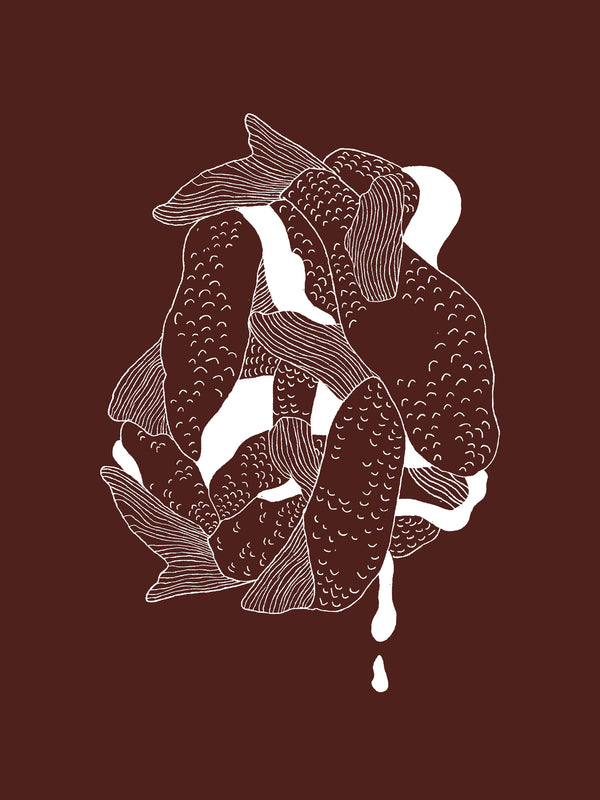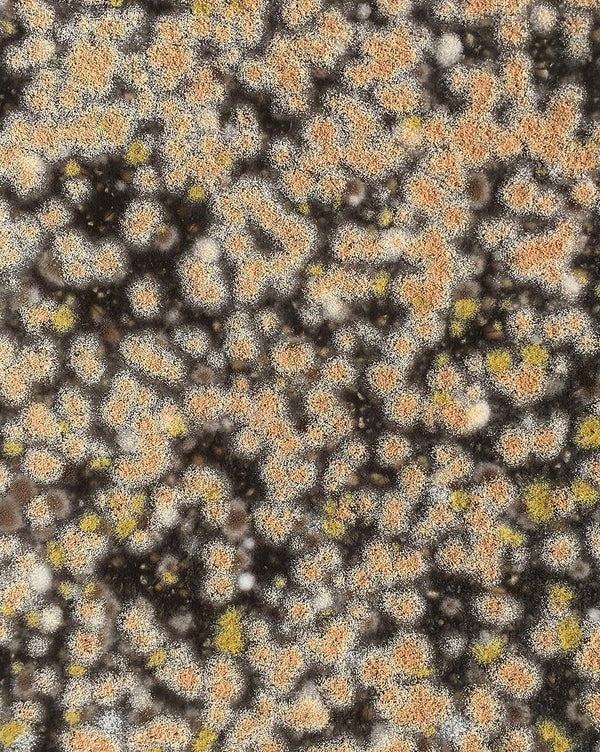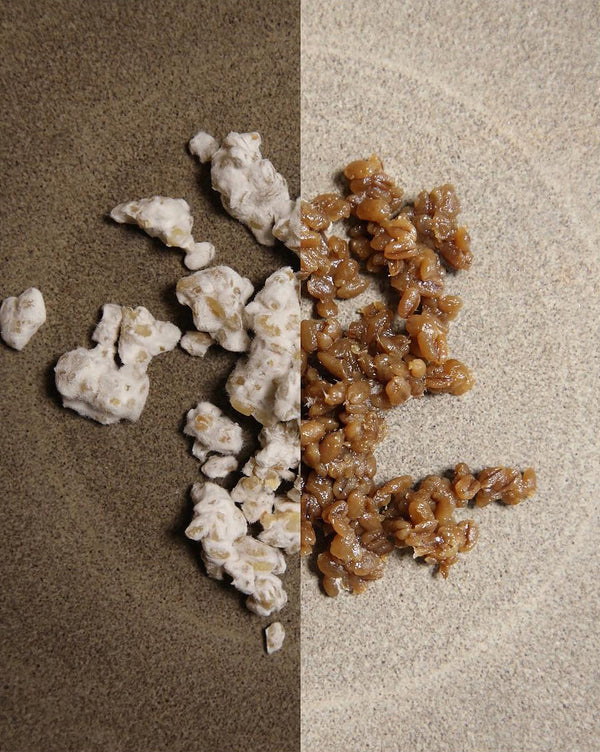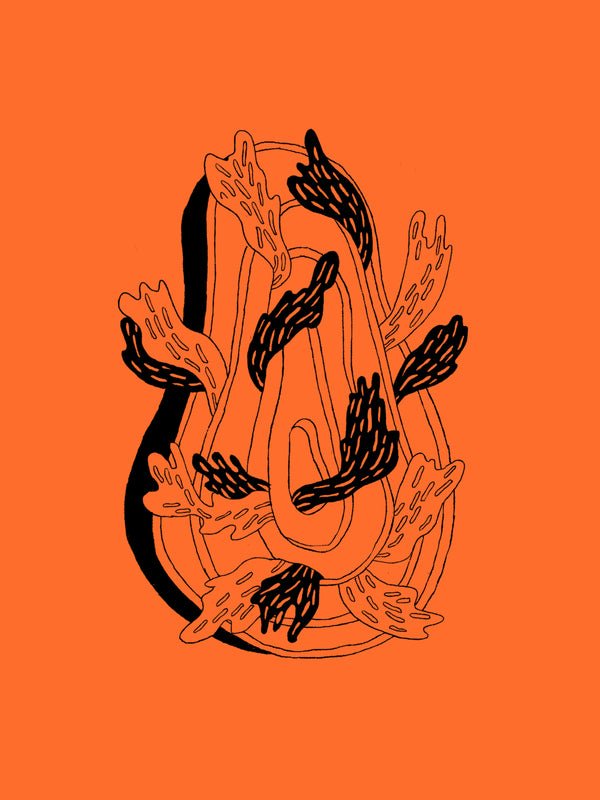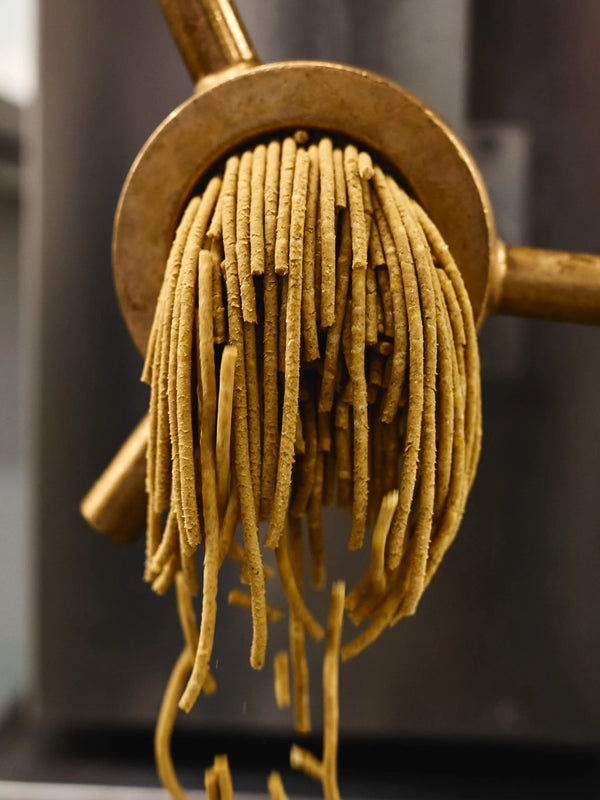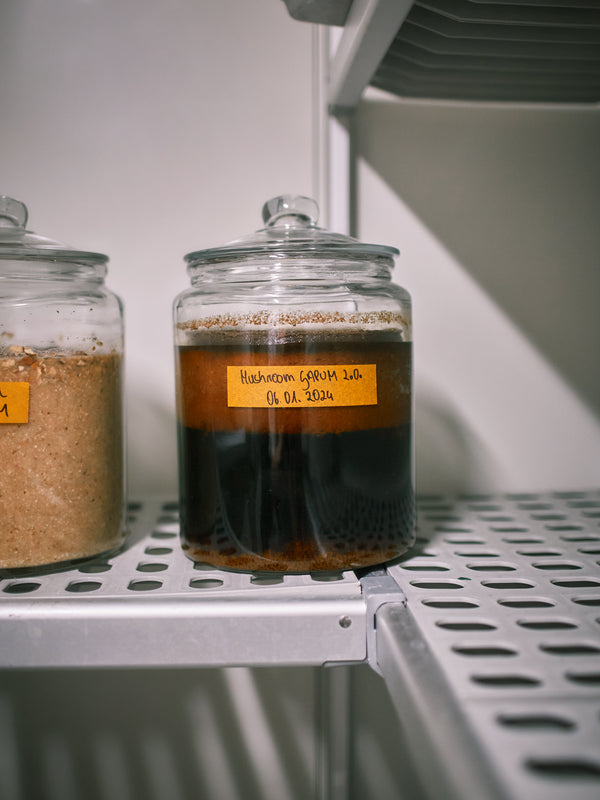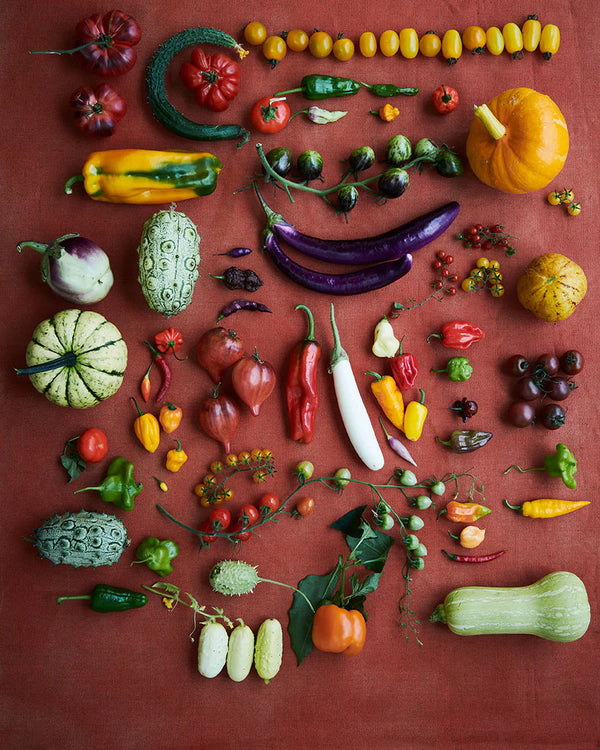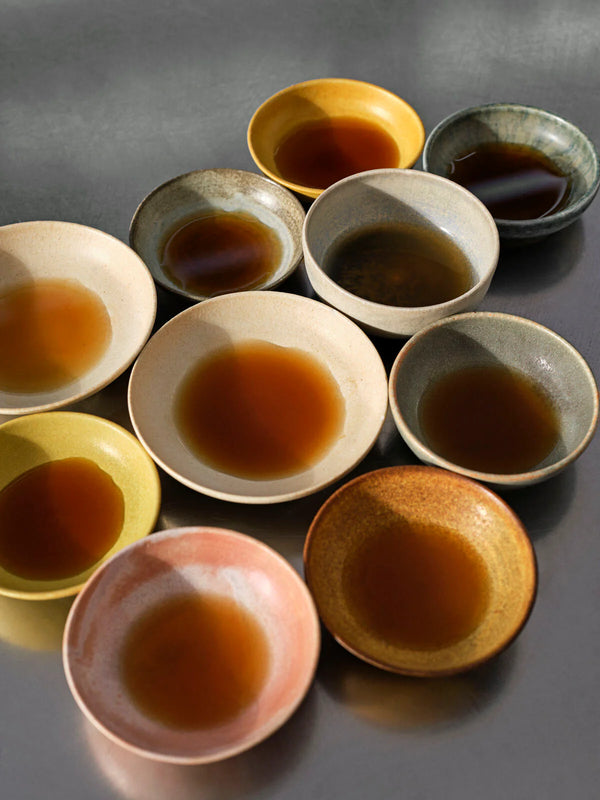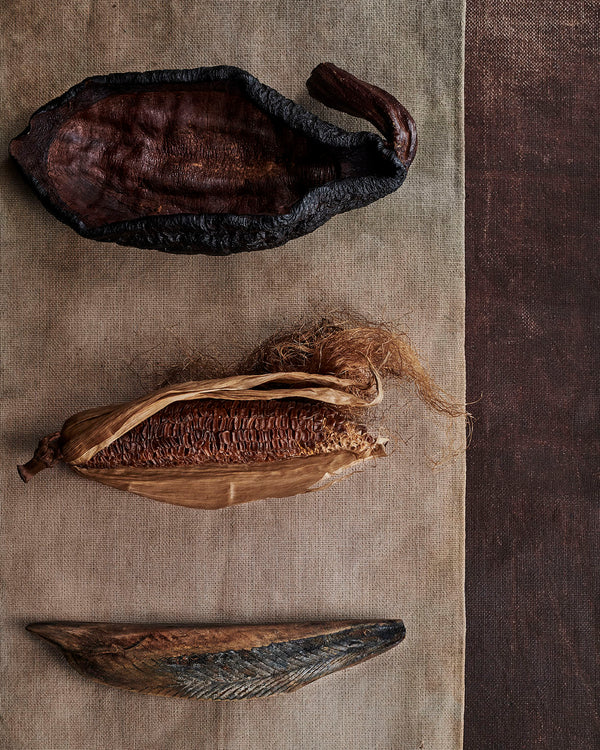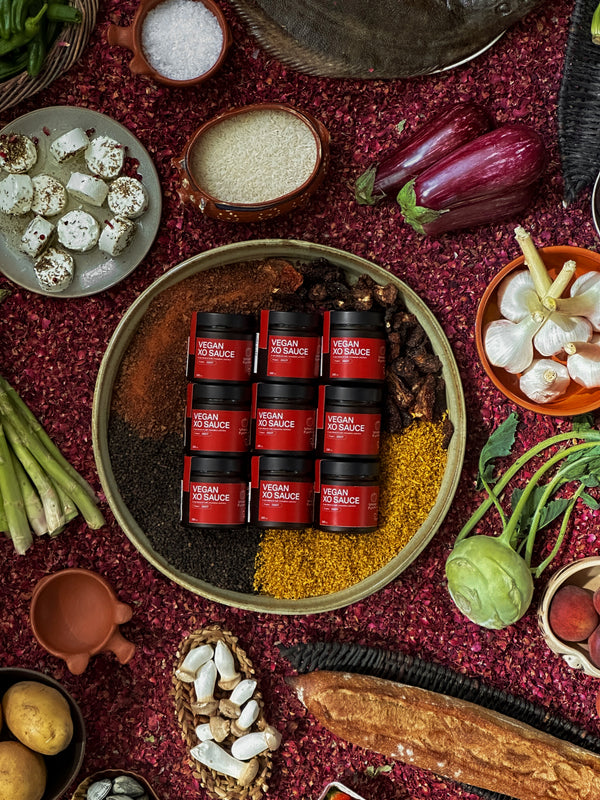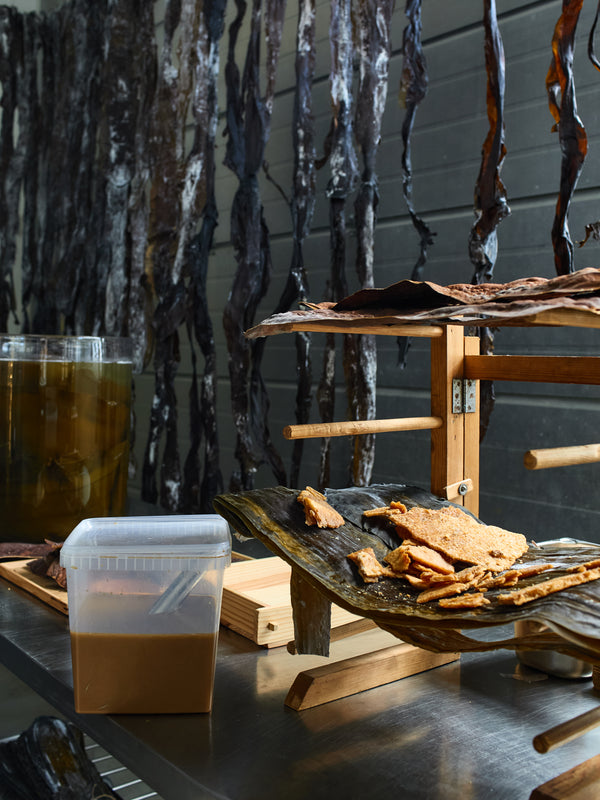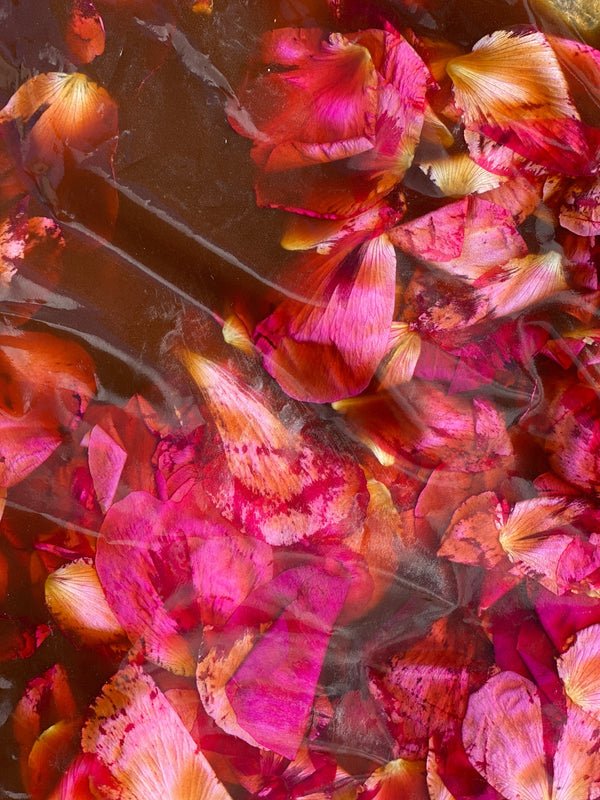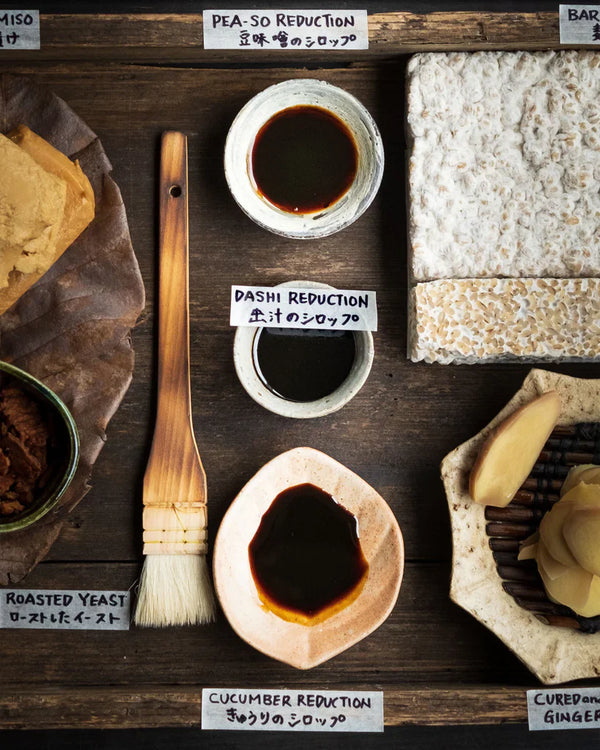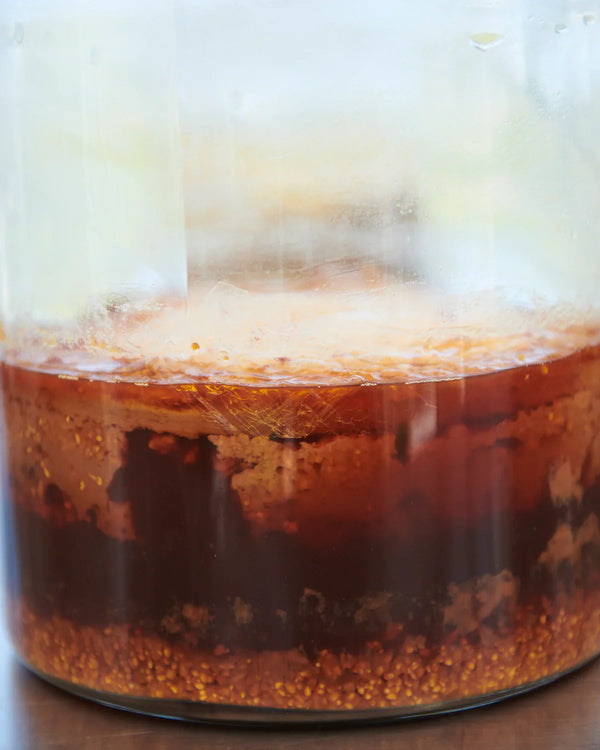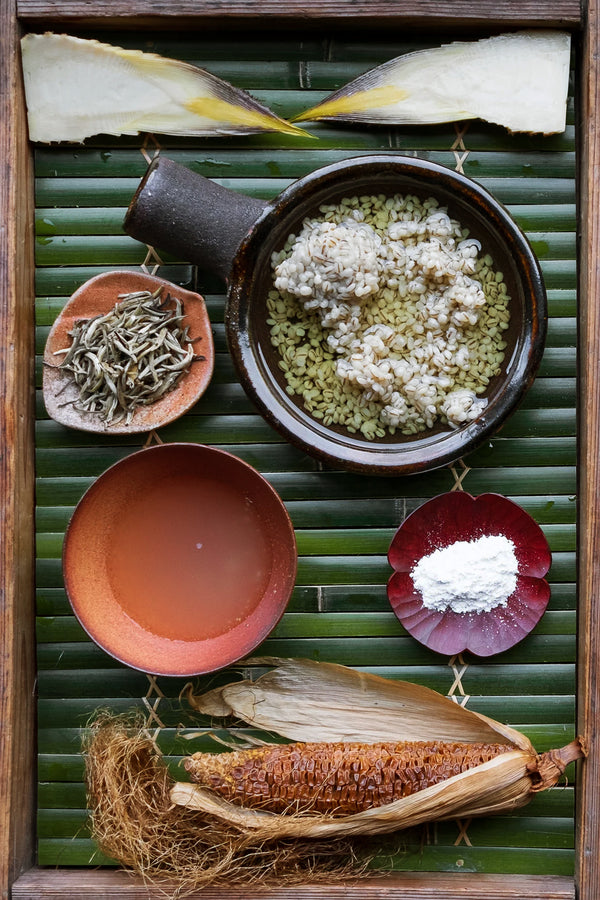One such breakthrough is Pepper Tamari, which just had its official Noma Projects debut earlier this month. And so, it seems like a good time to dig deeper.
Tamari can be made in one of two ways: the method that has inspired us most at noma is by drawing off the liquid byproducts from creating soybean miso. To develop miso, it is fermented with a weight on top. Displacement of water from the constant pressure forces a “puddle,” or tamari, to gradually form on the surface of the ferment.
Tamari’s origins can be traced back to the Aichi Prefecture, in the central western part of Japan, during the Edo period (1590-1868), when General Ieyasu Tokugawa would feed the carpenters who were constructing the Nagoya castle miso soup every day. At a certain point, people discovered that the raw liquid drawn off from the cedar kegs during the fermentation of miso was very appealing, as well. Tamari as we have come to understand it has a thicker texture, deeper color, and generally more assertive savory flavor than Shoyu. It is often used for dipping raw fish (sashimi) and sauteing teriyaki: concentrated umami impact. Shoyu tends to be a bit more multi-purpose. There are only certain areas that produce Tamari in Japan, whereas Shoyu is much more widely available.
Tamari as we have come to understand it has a thicker texture, deeper color, and generally more assertive savory flavor than Shoyu. It is often used for dipping raw fish (sashimi) and sauteing teriyaki: concentrated umami impact. Shoyu tends to be a bit more multi-purpose. There are only certain areas that produce Tamari in Japan, whereas Shoyu is much more widely available. How, exactly, did tamari end up in the food at our Scandinavian restaurant?
How, exactly, did tamari end up in the food at our Scandinavian restaurant?
It started when we tried to make “miso” with yellow split peas instead of soybeans and found great success. As it turns out, peasos also generate an immensely flavorful byproduct that can be accented with all kinds of ingredients. The problem is that we would need to produce an unrealistically large amount of said peaso to wind up with the amount of tamari we’d need. For a while, we considered peaso-based tamari more precious than gold.
We had to devise a way to increase the yield. We figured, If what we need is the concentrated liquid that forms while making peaso, why not add dilute and then reduce, maximizing quantity while maintaining the richness? In other words, we would call on the “reduction” technique that we had already successfully applied to many other ingredients like potato, celery or cucumber.
So: we blend 1-part peaso with 2 parts-water, then ice clarify. The liquid is then reduced to approximately 65 brix. The deeply colored, umami-rich liquid produced by this process is a near perfect facsimile of the source material. One important detail to point out is that our peaso is very low in salt; if we were to follow the same approach with a traditional miso, it would be offensively salty by the time the ideal viscosity was achieved.
As we show you in The Noma Guide to Fermentation, once you have dialed in the basic technique for tamari, you can take it in all sorts of directions, whether it’s through the choice of miso, dissolving liquid, or reduction temperature. Who’s to say a Morita chili tamari or Marcona almond tamari wouldn’t be delicious? It feels like there's always a tamari trial going on in the lab. Favorites include peach tamari, quince tamari, black truffle tamari, sansho tamari, and a particularly special one made with ground Madagascar pepper.
You can explore all the incredible ways we cook with Pepper Tamari in these recently released recipes—and bring it home by itself or as part of a new bundle with two of the most delicious ferments to ever come out of the lab.


